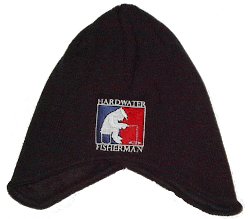**Vin Sparano is the Editor Emeritus of Outdoor Life
It is ironical that the circle hook, developed for commercial longline fishermen because of its deadly hooking ability, would also become one the of the most innovative and effective catch-and-release devices to come along in decades.
What makes this awkward-looking hook so effective for longliners is the fact that fish will hook themselves, an important factor for longliners who leave their baited gear unattended.
Circle hooks have been around since the turn of the century and commercial fishermen have been using them for more than 20 years, but only recently have recreational anglers discovered the unique catch-and-release advantage of these peculiar looking hooks. Circle hooks will invariably hook fish in the corner of the mouth, making it much easier to release a fish with minimal handling and unharmed.
There is also mounting evidence that the circle hook lives up to its reputation. Spud Woodward, a marine biologist with the Georgia Department of Natural Resources, has caught several hundred red drum up to 45 pounds. "More than 95 percent of these fish were hooked in the corner or the jaw," says Woodward. "Since we tag fish as part of our ongoing research, the circle hook helps us release a healthy fish back into the wild."
Al Ristori, a well-known saltwater angler and writer, reported a one-day catch of 25 striped bass on circle hooks with all but one bass hooked in the jaw. I used circle hooks this summer on bottom species and 90 percent of my fish were jaw hooked. In view of this growing evidence, some states are even considering making the circle hook mandatory for certain species to reduce mortality of undersize fish.
Studies also indicate that circle hooks are more effective than typical hook designs, which means you will catch more fish. One Canadian longliner reported the results of his comparison tests to the Fisheries Development Branch of Nova Scotia. Longlines were baited with an equal number of traditional and circle hooks. Of the 3,706 sets of each design fished over a period of eight days, the circle hooks took 794 halibut compared with 450 fish on traditional hooks.
What makes the circle hook different? First, and this is important, donıt try to set a circle hook when a fish hits. In fact, donıt try to set the hook at all. Let the fish chew on your bait until the hook does its job. One manufacturer, Eagle Claw, stresses this message with a label on its circle hook packages "On the take, do NOT set the hook; just reel fish in."
Hereıs how the circle hook works. A fish will take the bait into its mouth and start to swim off. At this point, if your try to set the hook, you will probably yank it right out of the fishıs mouth because of the hookıs design. Let the fish run and allow your line to tighten. When the line becomes taut, the eye of the hook will actually clear the mouth, but when the fish continues to swim away the hook will rotate in the fishıs mouth and the fish will hook itself in the corner of the jaw.
To overcome the urge to set the circle hook, try fishing "deadstick", which means leaving your baited rod in a holder and not touching it until its time to reel the fish in. When the fish is landed, a simple twist with a needle nose pliers on the shank will free the hook or you can use a dehooking device. Releasing small fish over water means you will not even have to touch the fish with your hands.
The circle hook should prove most effective for most bait fishing situations, especially livelining big shiners for largemouth or herring for striped bass. Catfishermen may also find the deadstick technique productive with stinkbaits.
Several manufacturers, including Eagle Claw and Mustad, now make circle hooks in sizes ranging from 1 to 8 for most freshwater bait fishing and 2/0 to 16/0 for saltwater species. There is some variation among manufacturers, so your best bet is to visit a tackle shop and compare actual sizes.
There is an additional advantage to using circle hooks. Because the point of a circle hook makes nearly a circle, a clumsy or careless fisherman is less likely to accidentally sink such a hook into his finger, ear or clothing.
**Vin Sparano is the Editor Emeritus of Outdoor Life Magazine, and is on the board of directors for The Catch & Release Foundation.







